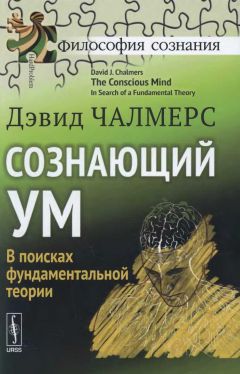Crick F. H. C. 1994. The Astonishing Hypothesis: The Scientific Search for the Soul. New York: Scribner.
Crick F. H. C., and C. Koch. 1990. Towards a neurobiological theory of consciousness. Seminars in the Neurosciences 2:263-75.
Cuda T. 1985. Against neural chauvinism. Philosophical Studies 48:111-27.
Cussins A. 1990. The connectionist construction of concepts. In M. Boden, ed., The Philosophy of Artificial Intelligence. Oxford: Oxford University Press.
Daneri A., A. Loinger, and G. M. Prosperi. 1962. Quantum theory of measurement and ergodicity conditions. Nuclear Physics 33:297–319. [Reprinted in Wheeler and Zurek 1983]
Davidson D. 1970. Mental events. In L. Foster and J. Swanson, eds., Experience and Theory. London: Duckworth.
Davies М. K., and I. L. Humberstone. 1980. Two notions of necessity. Philosophical Studies 38:1-30.
Dennett D. C. 1969. Content and Consciousness. London: Routledge and Kegan Paul.
— "— 1978a. Brainstorms. Cambridge, Mass.: MIT Press.
— "— 1978b. Are dreams experiences? In Dennett 1978a.
— "— 1978c. Toward a cognitive theory of consciousness. In Dennett 1978a.
— "— 1978d. Where am I? In Dennett 1978a.
— "— 1979. On the absence of phenomenology. In D. Gustafson and B. Tapscott, eds., Body, Mind, and Method. Dordrecht: Kluwer.
— "— 1987. The Intentional Stance. Cambridge, Mass.: MIT Press.
— "— 1988. Quining qualia. In A. Marcel and E. Bisiach, eds., Consciousness in Contemporary Science. Oxford: Oxford University Press.
— "— 1991. Consciousness Explained. Boston: Little, Brown.
— "— 1993a. Back from the drawing board. In B. Dahlbom, ed., Dennett and His Critics. Oxford: Blackwell.
— "— 1993b. The message is: There is no medium. Philosophy and Phenomenological Research 53:919-31.
Descartes R. 1984. The Philosophical Writings of Descartes. Translated by J. Cottingham, R. Stoothoff, and D. Murdoch. Cambridge: Cambridge University Press.
DeWitt B. S. 1970. Quantum mechanics and reality. Physics Today 23:30–35. [Reprinted in DeWitt and Graham 1973]
— "— 1971. The many-universes interpretation of quantum mechanics. In B. d’Espagnat, ed., Foundations of Quantum Mechanics. New York: Academic Press. [Reprinted in DeWitt and Graham 1973]
DeWitt B. S., and N. Graham, eds. 1973. The Many-Worlds Interpretation of Quantum Mechanics. Princeton: Princeton University Press.
Dretske F. I. 1977. Laws of nature. Philosophy of Science 44:248-68.
— "— 1981. Knowledge and the Flow of Information. Cambridge, Mass.: MIT Press.
— "— 1995. Naturalizing the Mind. Cambridge, Mass.: MIT Press.
Dreyfus H. 1972. What Computers Can’t Do. New York: Harper&Row.
Eccles J. C. 1986. Do mental events cause neural events analogously to the probability fields of quantum mechanics? Proceedings of the Royal Society of London B227:411-28.
Edelman G. 1989. The Remembered Present: A Biological Theory of Consciousness. New York: Basic Books.
— "— 1992. Bright Air, Brilliant Fire. New York: Basic Books.
Elitzur A. 1989. Consciousness and the incompleteness of the physical explanation of behavior. Journal of Mind and Behavior 10:1-20.
Evans G. 1979. Reference and contingency. The Monist 62:161-89.
— "— 1982. The Varieties of Reference. Oxford: Oxford University Press.
Everett H. 1957. «Relative-state» formulations of quantum mechanics. Reviews of Modem Physics 29:454-62. [Reprinted in Wheeler and Zurek 1983]
— "— 1973. The theory of the universal wave function. In B. S. deWitt and N. Graham, eds., The Many-Worlds Interpretation of Quantum Mechanics. Princeton: Princeton University Press.
Farah M. 1994. Visual perception and visual awareness after brain damage: A tutorial overview. In C. Umilta and M. Moscovitch, eds., Conscious and Nonconscious Information Processing: Attention and Performance 15. Cambridge, Mass.: MIT Press.
Farrell B. A. 1950. Experience. Mind 59:170-98.
Feigl H. 1958. The «mental» and the «physical.» In H. Feigl, M. Scriven, and G. Maxwell, eds., Concepts, Theories, and the Mind-Body Problem. Minnesota Studies in the Philosophy of Science, vol. 2. Minneapolis: University of Minnesota Press.
Feldman F. 1974. Kripke on the identity theory. Journal of Philosophy 71:665-76. Field H. 1973. Theory change and the indeterminacy of reference. Journal of Philosophy 40:762-81.
Flanagan O. 1992. Consciousness Reconsidered. Cambridge, Mass.: MIT Press.
Fodor J. A. 1980. Searle on what only brains can do. Behavioral and Brain Sciences 3:431-32.
— "— 1987. Psychosemantics: The Problem of Meaning in the Philosophy of Mind. Cambridge, Mass.: MIT Press.
— "— 1992. The big idea: Can there be a science of mind? Times Literary Supplement, July 3, pp. 5–7.
Forrest P. 1986. Ways worlds could be. Australasian Journal of Philosophy 64:15–24.
Foss J. 1989. On the logic of what it is like to be a conscious subject. Australasian Journal of Philosophy 67:305-20.
Foster J. 1991. The Immaterial Self: A Defence of the Cartesian Dualism Conception of Mind. London: Routledge.
Fredkin E. 1990. Digital mechanics. Physica D45:254-70.
Geach P. 1957. Mental Acts. London: Routledge and Kegan Paul.
Gell-Mann M., and J. B. Hartle. 1990. Quantum mechanics in the light of quantum cosmology. In W. Zurek, ed., Complexity, Entropy, and the Physics of Information. Redwood City, Calif.: Addison-Wesley.
Gert B. 1965. Imagination and verifiability. Philosophical Studies 16:44–47.
GhirardiG. C., A. Rimini, and T. Weber. 1986. Unified dynamics for microscopic and macroscopic systems. Physical Review D 34:470.
Goldman A. 1986. Epistemology and Cognition. Cambridge, Mass.: Harvard University Press.
— "— 1993. The psychology of folk psychology. Behavioral and Brain Sciences 16:15–28.
Gunderson K. 1970. Asymmetries and mind-body perplexities. In M. Radner and S. Winokur, eds., Analyses of Theories and Methods of Physics and Psychology. Minnesota Studies in the Philosophy of Science, vol. 4. Minneapolis: University of Minnesota Press.
Hamerojf S. R. 1994. Quantum coherence in microtubules: A neural basis for an emergent consciousness? Journal of Consciousness Studies 1:91-118.
Hardin C. L. 1987. Qualia and materialism: Closing the explanatory gap. Philosophy and Phenomenological Research 48:281-98.
— "— 1988. Color for Philosophers: Unweaving the Rainbow. Indianapolis: Hackett.
Hare R. M. 1952. The Language of Morals. Oxford: Clarendon Press.
— "— 1984. Supervenience. Proceedings of the Aristotelian Society, suppl., 58:1-16.
Harman G. 1982. Conceptual role semantics. Notre Dame Journal of Formal Logic 28:242-56.
— "— 1990. The intrinsic quality of experience. Philosophical Perspectives 4:31–52.
Hamad S. 1989. Minds, machines and Searle. Journal of Experimental and Theoretical Artificial Intelligence 1:5-25.
Harrison B. 1967. On describing colors. Inquiry 10:38–52. 1973. Form and Content. Oxford: Blackwell.
— "— 1973. Form and Content. Oxford: Blackwell.
Harrison J. 1981a. Three philosophical fairy stories. Ratio 23:63–67.
— "— 1981b. Gulliver’s adventures in Fairyland. Ratio 23:158-64.
Haugeland J. 1980. Programs, causal powers, and intentionality. Behavioral and Brain Sciences 4:432-33.
— "— 1982. Weak supervenience. American Philosophical Quarterly 19:93-103.
Healey R. A. 1984. How many worlds? Nous 18:591–616.
Heil J. 1992. The Nature of True Minds. Cambridge: Cambridge University Press.
Heilman G.,and F. Thompson. 1975. Physicalism: Ontology, determination and reduction. Journal of Philosophy 72:551-64.
Hill C. S. 1991. Sensations: A Defense of Type Materialism. Cambridge: Cambridge University Press.
Hodgson D. 1988. The Mind Matters: Consciousness and Choice in a Quantum World. Oxford: Oxford University Press.
Hofstadter D. R. 1979. Gydel, Escher, Bach: an Eternal Golden Braid. New York: Basic Books.
— "— 1981. Reflections on Searle. In D. R. Hofstadter and D. C. Dennett, eds., The Mind’s I. New York: Basic Books.
— "— 1985a. Who shoves whom around inside the careenium? In Metamagical Themas. New York: Basic Books.
— "— 1985b. Heisenberg’s Uncertainty Principle and the many-worlds interpretation of quantum mechanics. In Metamagical Themas. New York: Basic Books.
Honderich T. 1981. Psychophysical law-like connections and their problems. Inquiry 24:277–303.
Horgan T. 1978. Supervenient bridge laws. Philosophy of Science 45:227-49.
— "— 1982. Supervenience and microphysics. Pacific Philosophical Quarterly 63: 29–43.
— "— 1984a. Functionalism, qualia, and the inverted spectrum. Philosophy and Phenomenological Research 44:453-69.
— "— 1984b. Jackson on physical information and qualia. Philosophical Quarterly 34:147-83.
— "— 1984c. Supervenience and cosmic hermeneutics. Southern Journal of Philosophy, suppl., 22:19–38.
— "— 1987. Supervenient qualia. Philosophical Review 96:491–520.
— "— 1993. From supervenience to superdupervenience: Meeting the demands of a material world. Mind 102:555-86.
Horgan T., and M. Timmons. 1992a. Troubles for new wave moral semantics: The «open question argument» revived. Philosophical Papers.
— "— 1992b. Trouble on moral twin earth: Moral queemess revived. Synthese 92:223-60.
Horst S. 1995. Phenomenology and psychophysics. Manuscript, Wesleyan University.
Hughes R. I. G. 1989. The Structure and Interpretation of Quantum Mechanics. Cambridge, Mass.: Harvard University Press.
Humphrey N. 1992. A History of the Mind: Evolution and the Birth of Consciousness. New York: Simon and Schuster.
Huxley T. 1874. On the hypothesis that animals are automata. In Collected Essays. London, 1893–1894.
Jackendoff R. 1987. Consciousness and the Computational Mind. Cambridge, Mass.: MIT Press.
Jackson F. 1977. Perception. Cambridge: Cambridge University Press.
— "— 1980. A note on physicalism and heat. Australasian Journal of Philosophy 58:26–34.
— "— 1982. Epiphenomenal qualia. Philosophical Quarterly 32:127-36.
— "— 1993. Armchair metaphysics. In J. O’Leary-Hawthorne and M. Michael, eds., Philosophy in Mind. Dordrecht: Kluwer.
— "— 1994. Finding the mind in the natural world. In R. Casati, B. Smith, and G. White, eds., Philosophy and the Cognitive Sciences, Vienna: Holder-Pichler-Tempsky.
— "— 1995. Postscript to «What Mary didn’t know.» In P. K. Moser and J. D. Trout, eds., Contemporary Materialism. London: Routledge.
Jacoby H. 1990. Empirical functionalism and conceivability arguments. Philosophical Psychology 2:271-82.
Jaynes J. 1976. The Origins of Consciousness in the Breakdown of the Bicameral Mind. Boston: Houghton Mifflin.
Johnson-Laird P. 1983. A computational analysis of consciousness. Cognition and Brain Theory 6:499–508.
Kaplan D. 1979. Dthat. In P. Cole, ed., Syntax and Semantics. New York: Academic Press.
— "— 1989. Demonstratives. In J. Almog, J. Perry, and H. Wettstein, ed., Themes from Kaplan. NewYork: Oxford University Press.
Kim J. 1978. Supervenience and nomological incommensurables. American Philosophical Quarterly 15:149-56.
— "— 1984. Concepts of supervenience. Philosophy and Phenomenological Research 45:153-76.
— "— 1985. Psychophysical laws. In B. McLaughlin and E. LePore, eds., Action and Events. Oxford: Blackwell.
— "— 1989. Mechanism, purpose, and explanatory exclusion. Philosophical Perspectives 3:77-108.
— "— 1993. Supervenience and Mind. Cambridge: Cambridge University Press.
Kirk R. 1974. Zombies versus materialists. Aristotelian Society 48(suppl.): 135-52.
— "— 1979. From physical explicability to full-blooded materialism. Philosophical Quarterly 29:229-37.
— "— 1992. Consciousness and concepts. Proceedings of the Aristotelian Society 66(suppl.):23–40.
— "— 1994. Raw Feeling: A Philosophical Account of the Essence of Consciousness. Oxford: Oxford University Press.
Korb K. 1991. Searle’s AI program. Journal of Experimental and Theoretical Artificial Intelligence 3:283-96.


